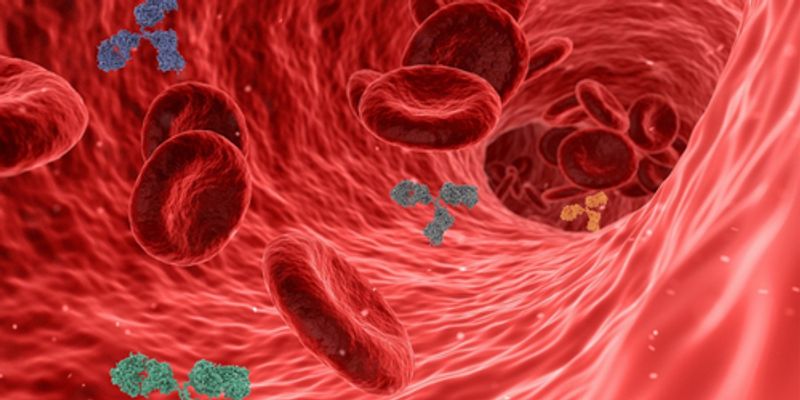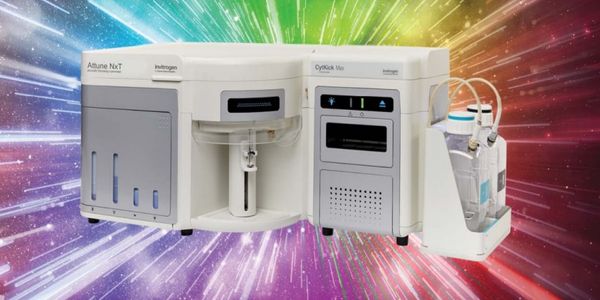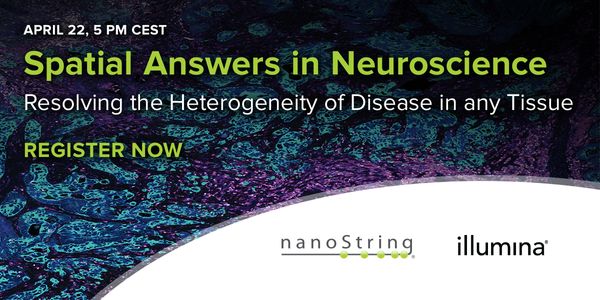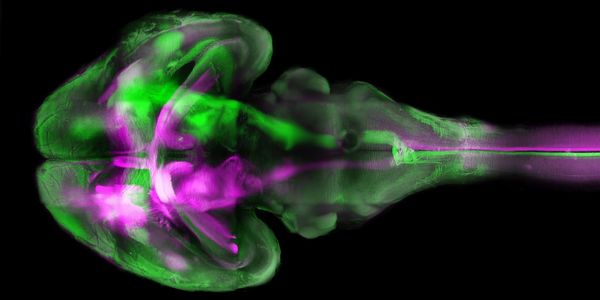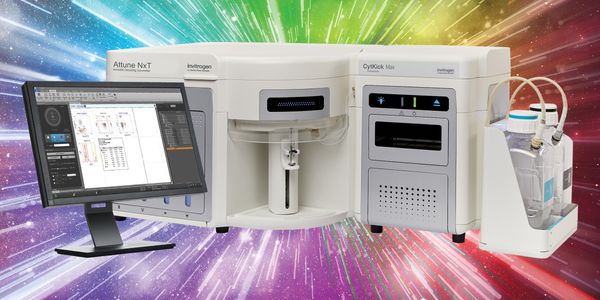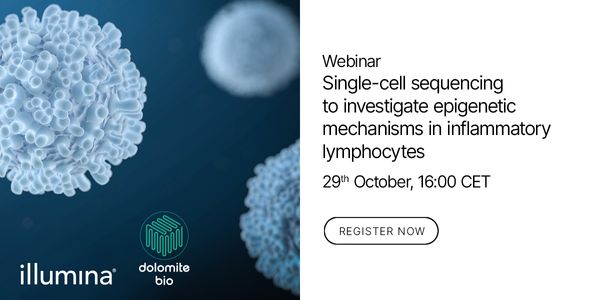Inflammations
Inflammation occurs when the immune system sends out cells to fight bacteria and/or heal an injury.
-
OCT 06, 2021 | 9:00 AMBackground: Localized prostate cancer is notable for tumor heterogeneity, and immune heterogeneity within tumor versus benign areas. B7-H3, a member of the B7 superfamily, is highly expresse...Speaker: Eugene Shenderov, MD, DPhil, FACPPresented at: Cancer Research & Oncology Week Virtual Event Series 2021
Sponsored By: NanoString TechnologiesSEP 22, 2021 | 11:00 PMNeutrophils are the most abundant immune cells in human blood and are crucial for host defense against bacterial and fungal infections. Neutrophils are made mainly in the bone marrow from wh...SEP 08, 2021 | 9:00 AMDate: September 8, 2021 Time: 9:00am (PDT), 12:00pm (EDT) Implanted biomedical devices comprise a major component of modern medicine and are essential for many clinical applications ranging...SEP 08, 2021 | 12:00 AMThe gut microbiota has been proposed to affect the risk and prognosis of various health outcomes. Related to pregnancy, existing studies suggest that pregnant women have a distinct microbiot...SEP 07, 2021 | 7:30 AMThe host antiviral innate immune response involves activation of multiple signaling pathways that result in the production of type I interferons (IFN-I) and inflammatory cytokines, which tog...JUN 15, 2021 | 9:00 AMDate: June 15, 2021 Time: 9:00am PDT HbA1c is routinely used in the clinical laboratory to diagnose and monitor diabetes mellitus. Many methods have been standardized to provide precise and...JUN 02, 2021 | 8:00 AMDate: June 2, 2021 Time: 8:00am (PDT), 11:00am (EDT) In this introduction Kelly Hunter will address the first Learning Objective. He will cover i) a range of digital pathology and tissue mul...Speaker: Kelly Hunter, BSc Biochemistry, MSc Genomics Medicine , Dr. Graham Taylor, BSc, Ph.DSponsored By: Leica BiosystemsJUN 02, 2021 | 12:00 AMProgress developing immune-based treatments to treat the highly lethal pancreatic ductal adenocarcinoma (PDA) has lagged behind other cancer types. This may be due, in part, to a fibroinflam...APR 22, 2021 | 5:00 PMDate: April 22, 2021 Time: 8:00am (PDT), 11:00am (EDT), 5:00pm (CEST) System transcriptomics of the schizophrenia brain - Phillip Khaitovich Schizophrenia tops the psychiatric disorder l...APR 20, 2021 | 5:00 PMDate: April 20, 2021 Time: 8:00am (PDT), 11:00am (EDT), 5:00pm (CEST) Spatial Answers on Oncology - Professor Joan Seoane Prof. Joan Seoane, Group Leader and Director of the Translational Re...Speaker: Noel De Miranda , Vasilis Stavrinides, MDSponsored By: NanoString Technologies, IlluminaAPR 20, 2021 | 12:00 AMTelomere length (TL) is widely considered a molecular/cellular hallmark of the aging process with implications for multiple diseases. While there has been success in epidemiology and genomew...APR 14, 2021 | 6:00 AMTwo studies on the immunology of COVID-19 are included in this webinar: First, Eugenia Ong, PhD with the Viral Research and Experimental Medicine Centre @ SingHealth Duke-NUS (ViREMiCS) and...Speaker: Eugenia Z. Ong, PhD , Joe Poh Sheng Yeong, MBBS PhD Mmed (Path)FEB 24, 2021 | 1:30 PMG protein-coupled receptors (GPCRs) are among the most intensively studied drug targets, and account for about ~34% of all drugs approved by the FDA. Examples of drugs targeting GPCRs includ...Speaker: Annette Gilchrist, PhD , Professor Kevin Pfleger, MA, PhD, FBPhS , Juan José Fung, PhD , Aarti Kawatkar , Yamina A. Berchiche, PhD , Ajay Yekkirala, PhDPresented at: Drug Discovery & Development Virtual Event Series 2021
DEC 03, 2020 | 10:30 AMThe severe acute respiratory syndrome coronavirus 2 (SARS-CoV-2) emerged in December 2019 and has spread globally, causing a pandemic of respiratory illness designated coronavirus disease 20...Speaker: Arutha Kulasinghe, PhD , Miguel Muñoz-Ruiz, PhDNOV 18, 2020 | 8:00 AMDATE: November 18, 2020 TIME: 08:00am PDT We develop and implement technologies to solve some of the major bottlenecks in biomedical research. In particular, we establish new imaging approac...NOV 17, 2020 | 8:00 AMDate: November 17, 2020 Time: 8:00am COVID-19 is a complex pathological condition caused by infection with SARS-CoV. Different features have been observed in patients with a severe dis...OCT 29, 2020 | 6:00 AMDate: October 29, 2020 Time: 6:00am (PDT), 9:00am (EDT), Chronic inflammation can occur as a result of a combination of genetic predispositions and environmental factors. Epigenetic modifica...Speaker: Thomas Ayers, Ph.D. , Pawel Zajac, Ph.D. , Dr. Adam CribbsSponsored By: Illumina, Dolomite BioOCT 08, 2020 | 12:00 AMCancer disparities among persons of African descent are driven by both biological and nonbiological factors. There is evidence in breast cancer that psychosocial factors (environment, socioe...Speaker: K. Sean Kimbro, PhDSEP 29, 2020 | 7:00 AMDate: September 29, 2020 Time: 10:00am PTD, 1:00pm EDT alytical Ultracentrifugation (AUC) in the biopharmaceutical industry has traditionally been employed in the analysis of aggregation and...SEP 23, 2020 | 1:30 PMFrom data to insight: Explore the full potential of high dimensional data by leveraging machine learning algorithms 1:30–2:00 pm PDT Presented By: Qianjun Zhang, MS Utilizing FCS Expre...Speaker: Qianjun Zhang, MS , Sean Burke, MS , Thiru Selvanantham, PhD , Beth Lindroth Hill, PhD , Jared K. Burks, PhD , Trevor McKee, PhD , Donald Allen, BSPresented at: 9th Annual Fluidigm Mass Cytometry Virtual Summit
SEP 23, 2020 | 12:00 PMB cells and tertiary lymphoid structures (TLS) promote immunotherapy response 1:00–1:30 pm PDT Presented By: Rafet Basar, MD...Speaker: Handan Xiang, PhD , Pei-Yu Chen, PhD , Hiranmayi Ravichandran, MS , Rafet Basar, MD , Amir Horowitz, PhDPresented at: 9th Annual Fluidigm Mass Cytometry Virtual Summit
SEP 17, 2020 | 11:00 AMInfectious diseases, such as COVID-19, are challenging to study in animal models due to species differences, and conventional 2D cell-based systems lack the complexity to appropriately model...SEP 10, 2020 | 7:30 AMThe selective pressure placed on the resident microbiota by local changes in the host environment – DNA damage, chronic inflammation, metabolic shifts, barrier damage, reduced immunosu...Speaker: K. Leigh Greathouse, PhD, MPH, MS, RDPresented at: Microbiology Week Virtual Event Series 2020
SEP 09, 2020 | 10:00 AMAsthma is an increasing health concern affecting more than 25 million individuals in the United States and more than 300 million individuals worldwide. In some cases, sensitization or exposu...Speaker: Chad Steele, PhD
OCT 06, 2021 | 9:00 AM
Background: Localized prostate cancer is notable for tumor heterogeneity, and immune heterogeneity within tumor versus benign areas. B7-H3, a member of the B7 superfamily, is highly expresse...
Speaker:
Eugene Shenderov, MD, DPhil, FACP
Presented at: Cancer Research & Oncology Week Virtual Event Series 2021
Sponsored By: NanoString Technologies
Sponsored By: NanoString Technologies
SEP 22, 2021 | 11:00 PM
Neutrophils are the most abundant immune cells in human blood and are crucial for host defense against bacterial and fungal infections. Neutrophils are made mainly in the bone marrow from wh...
SEP 08, 2021 | 9:00 AM
Date: September 8, 2021 Time: 9:00am (PDT), 12:00pm (EDT) Implanted biomedical devices comprise a major component of modern medicine and are essential for many clinical applications ranging...
SEP 08, 2021 | 12:00 AM
The gut microbiota has been proposed to affect the risk and prognosis of various health outcomes. Related to pregnancy, existing studies suggest that pregnant women have a distinct microbiot...
SEP 07, 2021 | 7:30 AM
The host antiviral innate immune response involves activation of multiple signaling pathways that result in the production of type I interferons (IFN-I) and inflammatory cytokines, which tog...
JUN 15, 2021 | 9:00 AM
Date: June 15, 2021 Time: 9:00am PDT HbA1c is routinely used in the clinical laboratory to diagnose and monitor diabetes mellitus. Many methods have been standardized to provide precise and...
JUN 02, 2021 | 8:00 AM
Date: June 2, 2021 Time: 8:00am (PDT), 11:00am (EDT) In this introduction Kelly Hunter will address the first Learning Objective. He will cover i) a range of digital pathology and tissue mul...
Speaker:
Kelly Hunter, BSc Biochemistry, MSc Genomics Medicine
, Dr. Graham Taylor, BSc, Ph.D
Sponsored By: Leica Biosystems
JUN 02, 2021 | 12:00 AM
Progress developing immune-based treatments to treat the highly lethal pancreatic ductal adenocarcinoma (PDA) has lagged behind other cancer types. This may be due, in part, to a fibroinflam...
APR 22, 2021 | 5:00 PM
Date: April 22, 2021 Time: 8:00am (PDT), 11:00am (EDT), 5:00pm (CEST) System transcriptomics of the schizophrenia brain - Phillip Khaitovich Schizophrenia tops the psychiatric disorder l...
APR 20, 2021 | 5:00 PM
Date: April 20, 2021 Time: 8:00am (PDT), 11:00am (EDT), 5:00pm (CEST) Spatial Answers on Oncology - Professor Joan Seoane Prof. Joan Seoane, Group Leader and Director of the Translational Re...
Speaker:
Noel De Miranda
, Vasilis Stavrinides, MD
Sponsored By: NanoString Technologies,
Illumina
APR 20, 2021 | 12:00 AM
Telomere length (TL) is widely considered a molecular/cellular hallmark of the aging process with implications for multiple diseases. While there has been success in epidemiology and genomew...
APR 14, 2021 | 6:00 AM
Two studies on the immunology of COVID-19 are included in this webinar: First, Eugenia Ong, PhD with the Viral Research and Experimental Medicine Centre @ SingHealth Duke-NUS (ViREMiCS) and...
Speaker:
Eugenia Z. Ong, PhD
, Joe Poh Sheng Yeong, MBBS PhD Mmed (Path)
FEB 24, 2021 | 1:30 PM
G protein-coupled receptors (GPCRs) are among the most intensively studied drug targets, and account for about ~34% of all drugs approved by the FDA. Examples of drugs targeting GPCRs includ...
Speaker:
Annette Gilchrist, PhD
, Professor Kevin Pfleger, MA, PhD, FBPhS
, Juan José Fung, PhD
, Aarti Kawatkar
, Yamina A. Berchiche, PhD
, Ajay Yekkirala, PhD
Presented at: Drug Discovery & Development Virtual Event Series 2021
DEC 03, 2020 | 10:30 AM
The severe acute respiratory syndrome coronavirus 2 (SARS-CoV-2) emerged in December 2019 and has spread globally, causing a pandemic of respiratory illness designated coronavirus disease 20...
Speaker:
Arutha Kulasinghe, PhD
, Miguel Muñoz-Ruiz, PhD
NOV 18, 2020 | 8:00 AM
DATE: November 18, 2020 TIME: 08:00am PDT We develop and implement technologies to solve some of the major bottlenecks in biomedical research. In particular, we establish new imaging approac...
NOV 17, 2020 | 8:00 AM
Date: November 17, 2020 Time: 8:00am COVID-19 is a complex pathological condition caused by infection with SARS-CoV. Different features have been observed in patients with a severe dis...
OCT 29, 2020 | 6:00 AM
Date: October 29, 2020 Time: 6:00am (PDT), 9:00am (EDT), Chronic inflammation can occur as a result of a combination of genetic predispositions and environmental factors. Epigenetic modifica...
Speaker:
Thomas Ayers, Ph.D.
, Pawel Zajac, Ph.D.
, Dr. Adam Cribbs
Sponsored By: Illumina,
Dolomite Bio
OCT 08, 2020 | 12:00 AM
Cancer disparities among persons of African descent are driven by both biological and nonbiological factors. There is evidence in breast cancer that psychosocial factors (environment, socioe...
Speaker:
K. Sean Kimbro, PhD
SEP 29, 2020 | 7:00 AM
Date: September 29, 2020 Time: 10:00am PTD, 1:00pm EDT alytical Ultracentrifugation (AUC) in the biopharmaceutical industry has traditionally been employed in the analysis of aggregation and...
SEP 23, 2020 | 1:30 PM
From data to insight: Explore the full potential of high dimensional data by leveraging machine learning algorithms 1:30–2:00 pm PDT Presented By: Qianjun Zhang, MS Utilizing FCS Expre...
Speaker:
Qianjun Zhang, MS
, Sean Burke, MS
, Thiru Selvanantham, PhD
, Beth Lindroth Hill, PhD
, Jared K. Burks, PhD
, Trevor McKee, PhD
, Donald Allen, BS
Presented at: 9th Annual Fluidigm Mass Cytometry Virtual Summit
SEP 23, 2020 | 12:00 PM
B cells and tertiary lymphoid structures (TLS) promote immunotherapy response 1:00–1:30 pm PDT Presented By: Rafet Basar, MD...
Speaker:
Handan Xiang, PhD
, Pei-Yu Chen, PhD
, Hiranmayi Ravichandran, MS
, Rafet Basar, MD
, Amir Horowitz, PhD
Presented at: 9th Annual Fluidigm Mass Cytometry Virtual Summit
SEP 17, 2020 | 11:00 AM
Infectious diseases, such as COVID-19, are challenging to study in animal models due to species differences, and conventional 2D cell-based systems lack the complexity to appropriately model...
SEP 10, 2020 | 7:30 AM
The selective pressure placed on the resident microbiota by local changes in the host environment – DNA damage, chronic inflammation, metabolic shifts, barrier damage, reduced immunosu...
Speaker:
K. Leigh Greathouse, PhD, MPH, MS, RD
Presented at: Microbiology Week Virtual Event Series 2020
SEP 09, 2020 | 10:00 AM
Asthma is an increasing health concern affecting more than 25 million individuals in the United States and more than 300 million individuals worldwide. In some cases, sensitization or exposu...
Speaker:
Chad Steele, PhD
